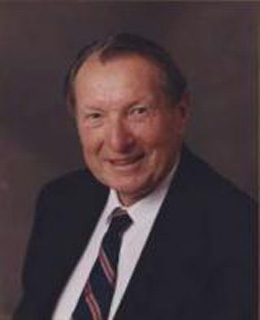
Harold McComb was born in 1924 in Brisbane, the son of Rowland McComb, who was involved with civil aviation, and Kathleen nee Earnshaw.
He graduated MBBS from the University of Melbourne and in the same year married a fellow graduate, Athol nee Hockey. They have four sons. The eldest, who graduated from the University of Western Australia in Medicine, is now Associate Professor of Obstetrics and Gynaecology in Vancouver, Canada.
Harold determined to train as a plastic surgeon and was greatly influenced by Benjamin Rank in Melbourne, himself a pioneer in plastic surgery.
In 1955 the family moved to Western Australia and Harold joined Mr Leslie Le Soeuf in developing a plastic surgery and burns unit at Royal Perth Hospital. Harold was the first fully trained plastic surgeon to come to Western Australia.
He was also appointed to Princess Margaret Hospital from 1955 to 1989 and Fremantle and Sir Charles Gairdner Hospitals from 1955 to 1965.
His contribution to plastic surgery has been enormous and he has never failed to assist in the development of plastic surgery in overseas countries. He has worked in India, Afghanistan, Bougainville, Vanuatu and Mauritius.
A member of the Court of Examiners of the Royal Australasian College of Surgeons indicates in itself his high professional standing.
His writings include: “Primary repair of the Cleft Lip Nose” in Reconstructive Plastic Surgery (1989), “The Nasal Deformity in Clefts” and “Primary Treatment of Cleft Lip Nasal Deformity” in Cleft Lip and Palate: A System of Management (1989), “Anatomy of Unilateral and Bilateral Cleft Lip Nose”, “Primary Unilateral and Bilateral Cleft Lip” and “Nose Reconstruction” in Multidisciplinary Management of Cleft Lip and Palate (1990).
Education:
University of Melbourne MB BS (Melbourne) 1947 FRCS (England) 1952 FRACS 1956 FACS 1960
Position:
Consultant Plastic Surgeon